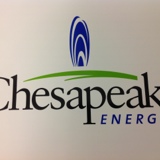Information
-
Site
-
Conducted on
-
Prepared by
-
Contractor
Pad Site
-
Is cellar free of water? Ref. CHK Standard
-
I reserve pit empty? Ref. CHK Standard
-
Are cellar covers in good condition? Ref. CHK Standard
-
Is overall pad in good condition? Ref CHK standard
-
Is pad free of any previous equipment? Ref. CHK standard
-
Equipment Layes out per Gas Train Drawing? Ref. CHK Standard
-
All equipment under containment? Ref. CHK Standard
-
Wellhead cages or barriers required? Ref. CHK standard
-
Additional comments.
Frac Tanks
-
Quick connect pipe from fresh water source free of leaks or damage? Ref. CHK BMP
-
Water manifold to tanks free of leaks, all valves to operate present and in containment if re-use water is used? Ref. CHK BMP, I.S.
-
All lines from manifold into tank secured to tank? Ref. CHK BMP
-
Tanks set level? CHK BMP
-
Stairs, handrails, and walkways pinned, connected and not damaged with no open holes? Ref. RP54 9.3.8, 1910.24(h)
-
Frac tanks grounded? Ref. RP2003 4.5.2
-
Valves double blocked when not in use? Ref. CHK BMP
-
Flare lines properly torqued? Ref. manufacturer recommendation
-
Flare line properly secured? Ref. API 9B
-
Additional comments.
Lease Entrance
-
Lease gate and cattle guard free of damage? Ref. CHK BMP
-
Dust control required? Ref. CHK BMP
-
Proper signage and sign in sheet at entrance to pad? Ref. API RP54 5.1-5.4, I.S., API RP49, RP54 4.1 and 4.2, 1910.145(c)(2)(i)
-
Medical services, driving directions, and first aid kit posted? Ref. 1910.151(b), RP54 4.1-4.3
-
Additional comments.
Personnel
-
All personnel on pad wearing proper PPE? Ref. CHK policy
-
Hard hat Ref. 1910.135(a)(1-2)
-
Safety glasses Ref. 1910.133(a)(1-5
-
Safety boots Ref. 1910.136(a)
-
FRC worn by all employees and properly? Ref. 1910.132, NFPA 2113
-
Gloves Ref. 1910.132(a)
-
Fall arrest system/ lanyards inspected and labels readable before working 4ft or more off the ground? Ref. 1910.66 App C(f), ANSI Z359.5.1.2
-
Hard hats and safety glasses available for visitors? Ref. 1910.132(a)
-
Personnel with less than 90 days experience are assigned a mentor? Ref. RP54 6.1.7
-
Personnel H2S awareness trained and have gas badges? Ref. API RP49 5.1
-
Each personnel involved in the job fit tested for drawer and Scott packs? Ref. CHK standard
-
Each company on pad has a JSA for their job? Ref. RP54 6.1.7
-
SIMOPS is being coordinated through Company man? Ref. RP54 6.1.7
-
Personnel using spotters when backing? Ref. CHK BMP
-
Personnel using tag lines? Rf. 1910.180(h)(3)(vi), Rap54 6.2.12
-
Personnel using designated smoking area? RP54 7.1.2-3
-
All personnel operating equipment are trained and certified on that equipment? Ref. manufacturer recommendation
-
General housekeeping good? Ref. RP54 6.5.1, 1910.22(a)(1)
-
Additional comments.
Job Execution
-
Supervisor/PIC identified and in control? Ref. CHK Standard
-
Employees work as a team? Ref. CHK standard
-
Equipment working without failures? Ref. CHK standard
-
Regular checks of equipment done? Ref. API RP54 9.16.1-3
-
Tools in good working order? Ref. API RP54 6.8.6
-
Laks on equipment contained? Ref. CHK Standard
-
Spill kit easily accessible? Ref. CHK standard
-
Spill containment in place? Ref. CHK standard
-
Safety procedure followed? Rf. CHK standard
-
Additional comments.
Crane
-
Cr/op certified Nd knowledgable? Ref. 1910.180(b)(3)
-
Outriggers out and pads under them? Ref. 1910.180(h)(3)(i)(a)
-
Boom angle not too great for load? Ref. 1910.180(h)(1)((i)
-
Cones out to identify swing path? Ref. 1910.180(h)(3)(iii)(b)
-
Crane is free of leaks? Ref. manufacturer recommendation
-
Cr/op has performed daily inspection? Ref. 1910.180(d)(2)(i)
-
Annual inspection on crane is up to date? Ref. 1910.180.(d)(2)(ii)
-
Cr/op remains at controls while lubricator is unsecured. Ref. 1910.180(h)(4)(i)
-
Rigging meets Crosby standards? Ref. Industry standard
-
F.E.'s charged, inspected and ready for service? Ref. RP54 16.1.10
-
Cr/op clear of area when testing or pumping? RP54 16.1.10
-
Lift slings inspected and label readable? Ref. 1910.184, 1915.112(b)
-
Chains inspected and tagged grade 8 or better? Ref. 1910.184, 1915.112(c)
-
Tag lines inspected and used while lifting loads? Ref. 1910.180(h)(3)(vi), API RP54 6.2.12
-
Only one person signaling crane operator? Ref. Industry standard
-
Outrigger floats secured with pad pin? Ref. 1910.180(h)(3)(iv)
-
Boom exhibits no damage to structure, wear pads, boom stops, or cylinder? Ref. 1910.180(h)(3)(ix)
-
Wire rope free of dirt, excess lube, kinks and spooled correctly? Ref. 1910.180(g)
-
Block not damaged? Ref. per manufacturer
-
No damage to the hook and it swivels freely? Ref. 1910.180(d)(3)(v)
-
All guards in place? Ref. 1910.212(a)(1)
-
Handrails in place, secured, and not damaged? Ref. 1910.21(f)(10)
-
Cab glass not cracked and wipers are functional? Ref. per manufacturer
-
anti-two block in place and functioning? Ref. 1910.180(b)(3)(iii)
-
Additional comments.
Rig Up-CT Unit
-
CT Unit placed upwind from well? API RP49 11.6.1, RP68 12.7.1
-
Steps leading to operators can secured, level, has handrails, and pins in place? Ref. 1910.23, 1910.36
-
All railing in place and secured with keeper pins? Ref. 1910.23(c)(1)
-
All hydraulic hoses in good condition with no leaks? Ref. industry standard
-
All pins and keepers in reel saddle? Ref. CHK standard
-
Only necessary personnel in area when rigging up? Ref. CHK standard
-
Injector gooseneck pinned? Ref. CHK standard
-
Lights and horns functional? Ref. 1910.180(b)(3)(iii)
-
Additional comments.
RIG UP- General/Wellhead
-
Spotters used when backing equipment? Ref. CHk standard
-
20# fire extinguisher located at left front bumper of each piece of equipment? Ref. API RP54 7.2.4-5
-
Fall arrest system used while in aerial lift? Ref. 1926.453(b)(2)(v)
-
Personnel using forklift and aerial lift must have current certification cards. Ref. 1910.178(i), 1926.453(b)(2)(ii)
-
Forklift inspected before use? Ref. 1910.178(p)(7)
-
Seatbelt used while operating forklift. Ref. B 56.1 5.3.19
-
Ropes used on hammer wrenches. Ref. CHK standard
-
Iron certification current. Ref. API RP54 12.5.1
-
Hammer unions in good shape and not mushroomed. Ref. API RP54 12.5.1
-
Restraints on iron and rated for that pressure. Ref. industry standard
-
Lubricator marked with permanent serial number. Ref. API RP54 13.6.5C
-
Lubricator certification currents. Ref. API RP54 13.6.2
-
BOP's tested. Ref. API RP54 6.4.1
-
All bolts in place in all flanges. Ref. API RP54 6.4.1
-
All personnel not involved with pressure testing should be outside of taped off area. Ref. API RP54 16.1.10
-
Caution tape around high pressure and crane working area. Ref. API RP54 16.1.10
-
Additional comments.
Well Head
-
No leaks around hydraulic lines for BOP or hydraulic valve. Ref. manufacturer recommendation
-
All valves have handles installed and number of turns to open and close on tree. Ref. BMP
-
Frac stack has platform installed or am lift on location. Ref. RP54 5.5.1
-
All flanges have all bolts and not short bolted. Ref. RP54 6.4.10
-
Cellar has been cleaned out and filled in to CSG valve less than 4 ft. And properly guarded. Ref. API 54 7.1.9/ RP54 6.7.2
-
Flow back tie in. Ref. CHK BMP
-
Hydraulic valves have 1 male and 1 female fitting. Ref. BMP
-
BOP hoses have crush proof sheaths. Ref. RP53 12.5.2
-
Frac head, hydraulic valve, BOP, and B section should be accompanied with test charts. Ref. RP53 17.3.7
-
Additional comments.
Lubricator
-
No leaks on closing unit. Ref. BMP
-
1 end male and 1 end female on connections. Ref. BMP
-
Open/Close clearly marked on handle. Ref. RP54 7.2.2, RP53 12.5.3f
-
Valve hand has direct line of sight to well head? Ref. CHK BMP
-
Closing unit has crush restraint over hoses. Ref. RP53 12.5.2
-
Additional comments.
Below Is In Operators Cab
-
Coil company field safety guide. Ref. CHK Standard
-
Emergency phone #'s filled out and posted. Ref. API RP54 4.2.1, RP49 7.6-7, RP54 7.7-8
-
Current SDS book? Ref. API RP54 6.1.12, 1919.1200(g)(1)
-
Copy of emergency response plan. Ref. 1919.38(b)
-
First aid kit current and stocked, blood borne pathogen kit. Ref. API RP54 4.3.2, 1910.151(b)
-
Fire extinguisher monthly/annual current. 1910.157(e)(1)-(2)
-
Operators manual. Ref. per manufacturer
-
Load chart legible and visible to operator. Ref. 1910.180(c)(2)
-
Hand signal chart visible to workers. Ref. Industry Standard
-
Hand held wind speed indicator. Ref. Industry standard
-
Additional comments.
Light Plants/Generators
-
Rig lighting and fixtures shall be of appropriate electrical classification for the area in which they are located. Ref. RP54 9.14.6, RP 500
-
Light fixtures should be replaced and maintained to provide illumination for work areas. Ref. RP54 9.14.7
-
Light plants/generators shall be placed 100ft from well. Ref. RP54 9.14.2
-
All electrical extension cords shall be properly insulated and plugs shall be in good condition. Ref. RP54 9.14.5
-
Light plants shall be grounded. Ref. RP 2003
-
Repairs shall not be made on lit plants unless LOTO is performed and person is qualified. Ref. RP54 9.14.9
-
Additional comments.
Eye Wash Trailer
-
Personnel know where eye wash trailer is located? Ref. 1910.151
-
Trailer is clearly marked. Ref. 1910.145(c)(2)(i)
-
Tanks are full and have been tested daily. Ref. z358.14.1.4
-
Generator starts on first crank. Ref. manufacturer recommendation
-
Water flows freely from eye wash and shower. Ref. z358.1 5.1.6
-
Additional comments.
Rig Up-N2 Pump
-
Iron certification current ref. API RP54 12.5.1
-
Hammer unions in good shape and not mushroomed. Ref. API RP54 12.5.1
-
Steps leading to operators cab secured, level, has handrails and keeper pins in place. Rf. 1910.23, 1910.36
-
N2 PPE being used (face shield, cryo gloves)
-
Additional comments.
Outside of Equipment (Trailers)
-
Is equipment clean? Ref. CHK Standard
-
Fuel tanks/caps/mounts in place and not damaged. Ref. API RP54 8.3.3
-
Fuel, hydraulic and other tanks properly labeled. Ref. 1910.1200(f)(5)
-
All drive belts and rotating lines have guards in place. Ref. API RP54 6.8.3, API RP54 6.8.2-3
-
All hoses on equipment in good condition. Ref. General duty clause
-
One axle. on each unit chocked. Ref. API RP54 11.1.2
-
Trailer plug and hitch secured and not damaged. Ref. CHK Standard
-
Break away cable on light duty trailers connected and working properly. Ref. FMCSA 393.43(d)
-
Tool/junk boxes uncluttered and lids able to close and latch. Ref. FMCSA 393.100(b)
-
Leaks on equipment. Ref. Industry Standard
-
Additional comments.
Chemicals
-
Acid transport and all other tote tanks in containment. Ref. CHK BMp
-
All chemicals clearly labeled wish SDS. Ref. 1910.1200(b)(1)
-
All personnel wearing proper PPE per SDS. Ref. 1910.1200(b)(1)
-
All transfer lines are fit for purpose. Ref. manufacturer recommendation
-
Acid transport grounded. Ref. RR 2003
-
Additional comments.
Fuel Trucks
-
Discharge valves, hose, and nozzles in good condition. Nozzle equipped with auto shut off. Ref. 1910.106(b)
-
Piping and fuel lines in good condition. Ref. 1910.106(b)
-
2 people while fielding at all times. Ref. CHK BMP
-
Fuel tanks properly labeled on all sides. Ref. RP54 8.4.1d, 1910.1200(f)(4-5)
-
Fuel lines not ran under equipment when not in use. Ref. BMP
-
"No smoking" signs erected on all sides. Ref. RP54 7.1.2-6
-
Vapor release vents elevated & away from ignition sources. Ref. 1910.106(b)(2)(iv)(c)
-
General housekeeping. Ref. 1910.22(a)(1)
-
B/C class fire extinguisher available and identified. Ref. 1910.157(c)(1)
-
Splash filling prohibited.
-
Fill line & discharge velocity limited.
-
Grounded.
-
Contents of NON-FLAMMABLE storage tanks identified on all sides of tanks(s). Ref. 1910.145(c)(2)(i)
-
Additional comments.
Post Job
-
Area policed, garbaged picked up.
-
Spills cleaned up before leaving location.
-
Location left clean.
-
Cellars empty.
-
Reserve pit empty.
-
Cellar covers in good condition.
-
Does wellhead have cages or guards,
-
Additional comments.












